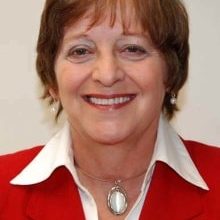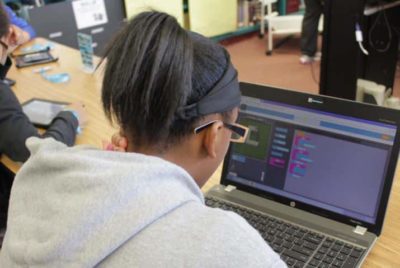I’ve spoken with several local residents who are determined to learn the truth in the swirling debate about education funding in Haywood. The good news is, the answers are there. They can be found in information printed in The Mountaineer, as well as in the supporting documents online that include charts provided by both school and state officials. Even more information is available online through the N.C. Department of Education.
The bad news is, the answers are complicated and the statistics are baffling. The data can be used in a variety of ways to bolster an array of conclusions based on personal points of view.
Here’s the basic, two-part question in Haywood that is sending people to the numbers.
Why are leaders in the Haywood County school system considering something as drastic as closing Central Elementary, a beloved and successful school with passionate backers?
What in the world is happening with education funding in the county that’s driving a $2.4 million in cut to programs and operations?
Republican legislators, with Rep. Michele Presnell leading the charge to defend the revamped legislative agenda on education, rightfully say Haywood County received more state money this school year than in the past.
School district leaders rightfully say they are taking stark actions because of reduced funding from the state for educational programs, a declining enrollment and the funds they receive which are immediately transferred to other schools.
There have been occasions where the debate turned nasty. Presnell has accused Haywood County school leaders of “gross mismanagement,” and called it “shameful when people in the public trust try to actively mislead the public.”
Bill Nolte, Haywood County Schools’ associate superintendent, countered that Presnell’s conclusions were “incomplete, inaccurate and misleading.”
Name-calling aside, it is easy to say that Presnell’s numbers are correct and that local school leaders are also correct when they describe the looming budget deficit they face.
It is the story behind the numbers that allow different conclusions to be reached.
The money
The total budget for Haywood County Schools is about $67 million for the current school year. Of that, $14.1 million comes from local property tax payers and about $41 million in operational funding is from the N.C. General Assembly. The remainder is from lottery funds, federal funds, grants and other sources.
State funding to Haywood increased from $39,451,000 to $40,020,796, about 1.4 percent. That’s an increase of $569,132, but Haywood County schools had to transfer $933,000 in state funds directly to charter schools in the region, including the newly opened Shining Rock Classical Academy.
Charter school impact
The school district had already eliminated eight teaching positions in anticipation of fewer students (Haywood schools lost about 140 students when Shining Rock opened) but an October revision based on the number of students at charter and online schools meant an additional eight positions had to be cut. Rather than make a mid-year correction that would disrupt students and teachers, the school district is absorbing the added cost through its fund balance.
The amount of funds transferred elsewhere paid for the 266 Haywood students enrolled at Shining Rock (230) and other charter or on line schools.
A public charter school, Shining Rock Classical Academy serves students in grades kindergarten through 6, and will expand to a high school, adding one grade a year.
This year’s enrollment at Shining Rock is about equal to that of Central Elementary School. Since funding from both come from the same pot of money, it is rational to conclude that when a new elementary school opens, an older school must close. That’s unless there is a large infusion of extra cash from either the county or the state. That is something school leaders aren’t counting on but would love to have.
The classic school choice debate, a system where parents can choose where to send their children to school and the money follows the child, has been widely discussed in North Carolina for the past four years. That debate now has landed squarely in Haywood County, and is at the heart of the Central Elementary School closure.
Positions vs. dollars
When legislators and state officials talk about education funding, they look at the overall dollars carved out for education. Last year, legislators appropriated more than $8 billion, or 37.8 percent of the state budget for primary and secondary education. However, the funds are spread among a much broader base that includes vouchers for low-income students to attend private and religious schools, public charter schools that compete with traditional public schools and online schools that have a sketchy record, but still get money.
State funds for personnel are dollars never seen by the school district because they go directly for salaries. While state funds are included in the total allocation, the school district views the data in the form of teaching positions.
In Haywood, the amount of money allotted for teachers increased, but the number of teaching positions fell. That’s because higher salaries and benefits translates into fewer teachers.
The state currently pays for 324.25 classroom teaching positions in Haywood. Presnell initially said the district was allotted 365 positions and later corrected that number to 333.5. In this case, the school district should hope Presnell is right and that she can deliver the funds for the extra nine teachers she says the county has. That’s about $434,000, or enough to keep Central Elementary afloat for another year.
Local funds
To keep class sizes small, counties provide local funds ($14.1 million in Haywood’s case) for additional teachers, program and instructional support. When state salaries and benefits increase, a larger amount of local funds subsequently goes to teachers, which means funds must increase, or positions and programs get cut. The state strictly controls how school districts spend state money, but charter schools get a lump sum to spend any way they wish. When talking about budget cuts, the Haywood school board only discusses the $14.1 million in local funding where they can control how funds are spent.
Some have suggested the county commissioners fund education at a higher level. At present, Haywood is 24th out of 115 school districts in providing local financial support for education.
Other funds
In addition to operational funds, schools get funding from the state lottery. The lottery started out as a way to help school districts with capital expenditures, to help provide scholarships for college-bound students, for teacher salaries in grades K-3 and for pre-kindergarten programs. Haywood was projected to net more than $1 million from lottery funding for capital projects annually, but Gov. Beverly Perdue diverted lottery funds for other uses during the Great Recession, and funding has never been restored. Most recently the county received just $497,000 from lottery funds, even though this state revenue source is growing exponentially.
Per student basis
In Haywood, the state provided $5,042 for each student in the district to fund operational programs. (This number excludes children with special needs.) Public charter schools receive $3,200 for each exceptional student, while traditional schools receive $1,200 per exceptional student.
The state amount, referred to as Average Daily Membership, or ADM, is up just slightly from the $4,823 received last year. In addition, the district receives $1,983 per student from Haywood County.
Out of Haywood’s pool of operation funds from the state, the $933,000 sent to Shining Rock includes funds for students the Haywood district never had never enrolled because more than half the charter school students came out of home-schooled situations or from outside the district.
The county provided an extra $508,000 to cover the local portion for these students, which essentially was a “hold harmless” move to absorb the additional costs without further eating into the Haywood schools existing budget.
Assuming there is no change in the allocations and a slight growth in charter school attendees since a new kindergarten class will start at Shining Rock Classical Academy, about $2 million in funding from the state and local funds will immediately be transferred to charter schools.
Enrollment
School enrollment in Haywood has been shrinking for a decade. Presnell has suggested students are flocking to charter schools because of deficiencies and mismanagement within the traditional school system. This statement has raised the hackles of local school officials.
A pre-recession high of 8,013 students was enrolled in Haywood in 2007-08, while this year’s enrollment in the district is 7,188.
The declining student population trajectory in Haywood is traced to an out-migration of young families during the recession, plus a lower birth rate, something school leaders have mentioned for at least the past three years during board meetings, interviews with the press and at county-school budget work sessions.
While fewer students does require fewer teachers overall, with a student coming out of various grades in multiple schools, it is difficult to combine classes without combining schools.
Fund balance
Haywood County Schools were awarded a $1 million “Race to the Top” grant and several federal grants to help schools through the Great Recession that hit locally in 2008. In all, Haywood received $61.7 million from other state and local sources to help weather the recession.
Careful budgeting allowed the funds to be saved up and used to help bridge shortfalls through an annual fund balance appropriation. Last year, about $1.1 million was used from fund balance, $1.9 million was budgeted. Next year, no fund balance will be available for use.
Financial mismanagement?
Knowing the population trends and that a charter school was opening, should school leaders have cut budgets earlier? It is an argument worth discussing.
School board members could have consolidated school campuses earlier, not funded the extra positions to maintain current programming out of fund balance, and there would have been no cliff in the winter of 2016. It’s my belief, however, that it was (and is) inevitable that in the face of static funding, cuts in the local school district are needed. Earlier actions would not have likely changed the outcome.
Is poor school quality driving enrollment decline?
Hardly. In the entire state, Haywood schools are ranked 15th out of 115 school districts, up from 24th about a decade ago. The district has one elementary school, Riverbend, that ranks in the top 1 percent in the nation. Three elementary schools, Riverbend, Jonathan Valley and Bethel, are Blue Ribbon schools that rank in the top 2 percent in the state.
Parents organizing Shining Rock continually stressed a desire for “experiential” or hand-on learning experiences. Whether this type of teaching will result in test scores above, equal to or below what is found in the traditional schools remains to be seen.
Some parents seek out charter schools for reasons other than educational quality. At a school foundation board meeting, a member shared a conversation she overheard at a swimming pool this summer. Two mothers, whose children were in the Riverbend school district (the one ranked in the top 1 percent in the nation), were discussing the new charter school. One said she was opting for the charter school because she didn’t want her children attending classes with “those country kids.”
Food for thought
As is shown above, there are plenty of facts, figures and documents readily available about education in North Carolina — and in Haywood.
At the end of the day, however, the real issue comes down to a philosophy about the best way to educate and prepare our youth for the future.
The North Carolina Constitution states: “The General Assembly shall provide by taxation and otherwise for a general and uniform system of free public schools.”
In the past decade, the way that mandate is carried out has been broadened. These questions are worth considering as the debate moves forward.
Is choice better, or does it dilute the core function of a uniform system?
Is it good public policy, or does it make economic sense, to allow for-profit enterprises to get a piece of the pie when in comes to the $8 billion spent on primary and secondary education in North Carolina?
Can traditional public schools be improved, and if so, what is the best way to do that?
All these questions are certain to be at the forefront in the upcoming primary and general elections scheduled across the state. Remember, the best way to make your voice is heard is to speak out.
This article was first published on February 8, 2016 in The Mountaineer, a community newspaper serving Haywood County, NC. It is reprinted here with permission from Mountaineer Publishing.





